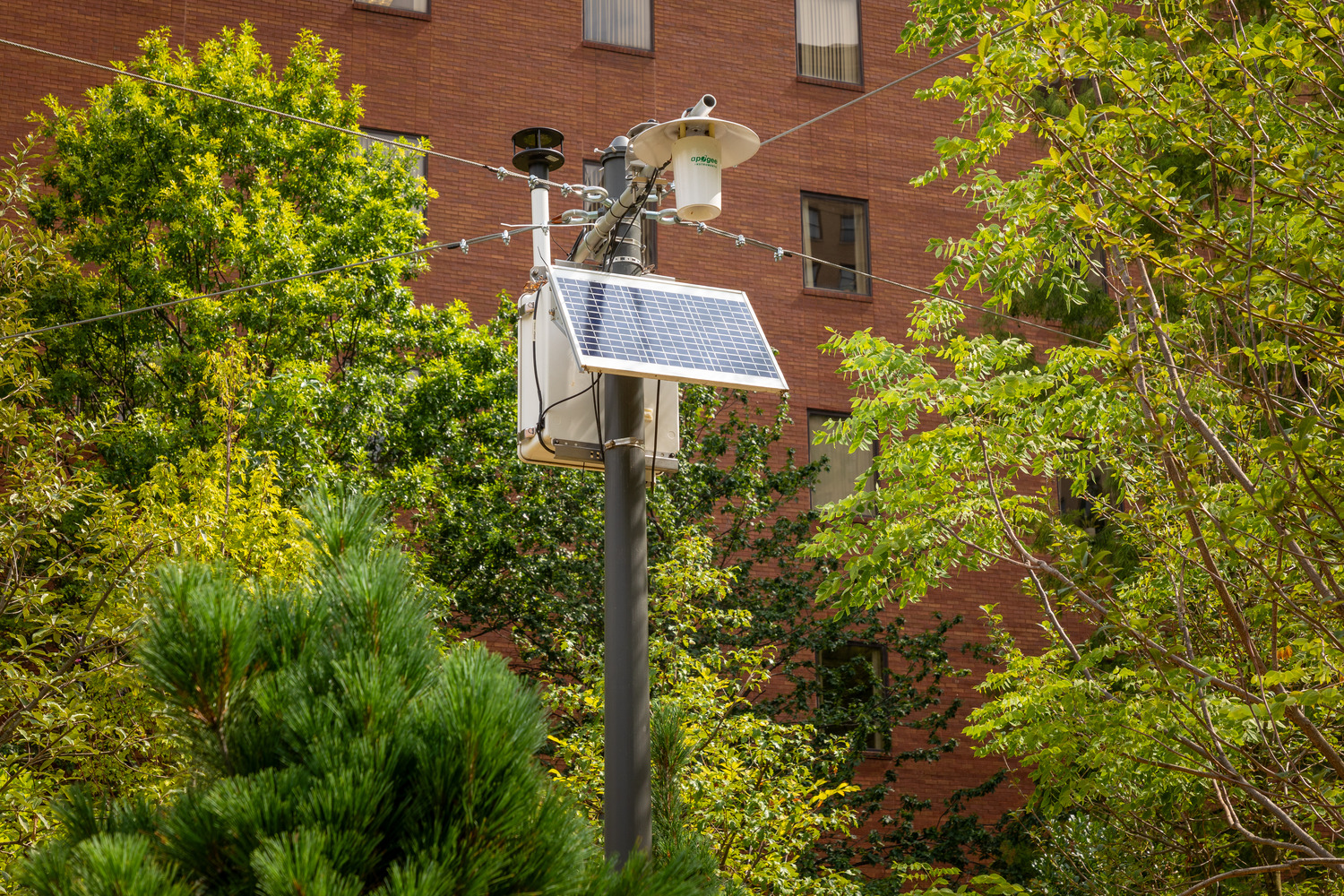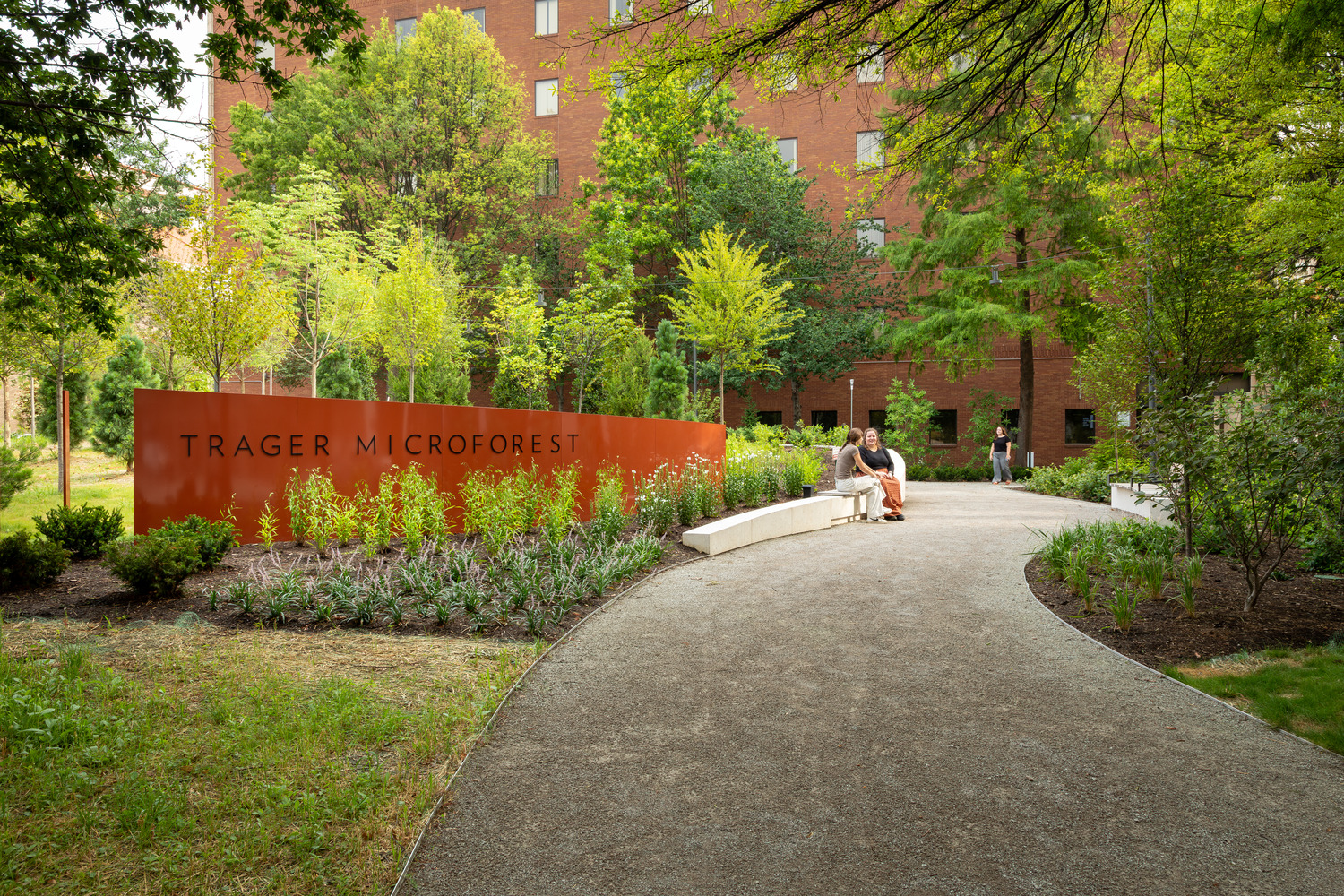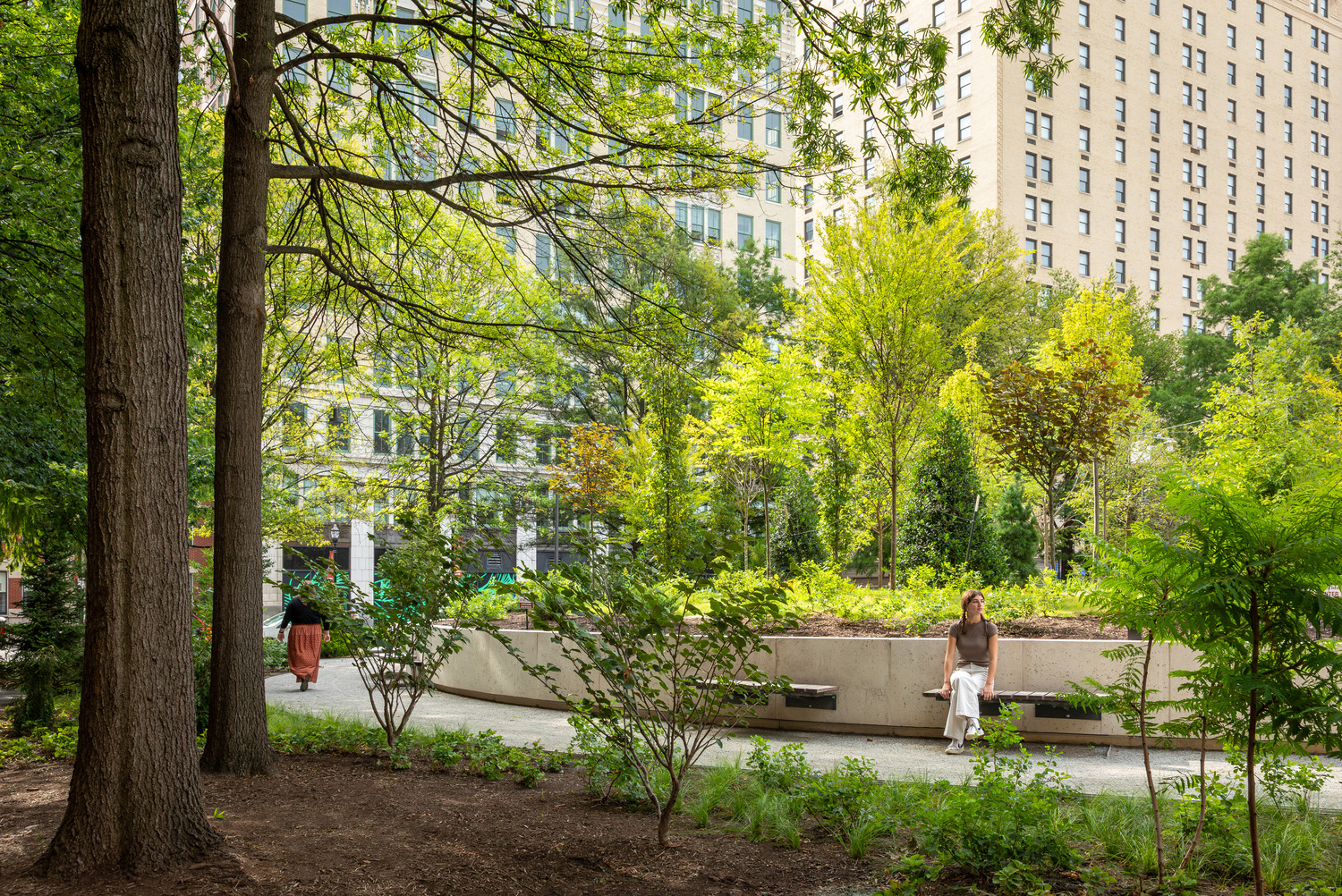
By creating dense urban forests with a variety of indigenous species—the project aims to enhance biodiversity and create a self-sustaining ecosystem of multiple modified native plant communities. More than just a pocket park, the Trager MicroForest will incorporate a walking path, educational signage, and numerous seating areas, making it an inviting space for families, employees and visitors alike.
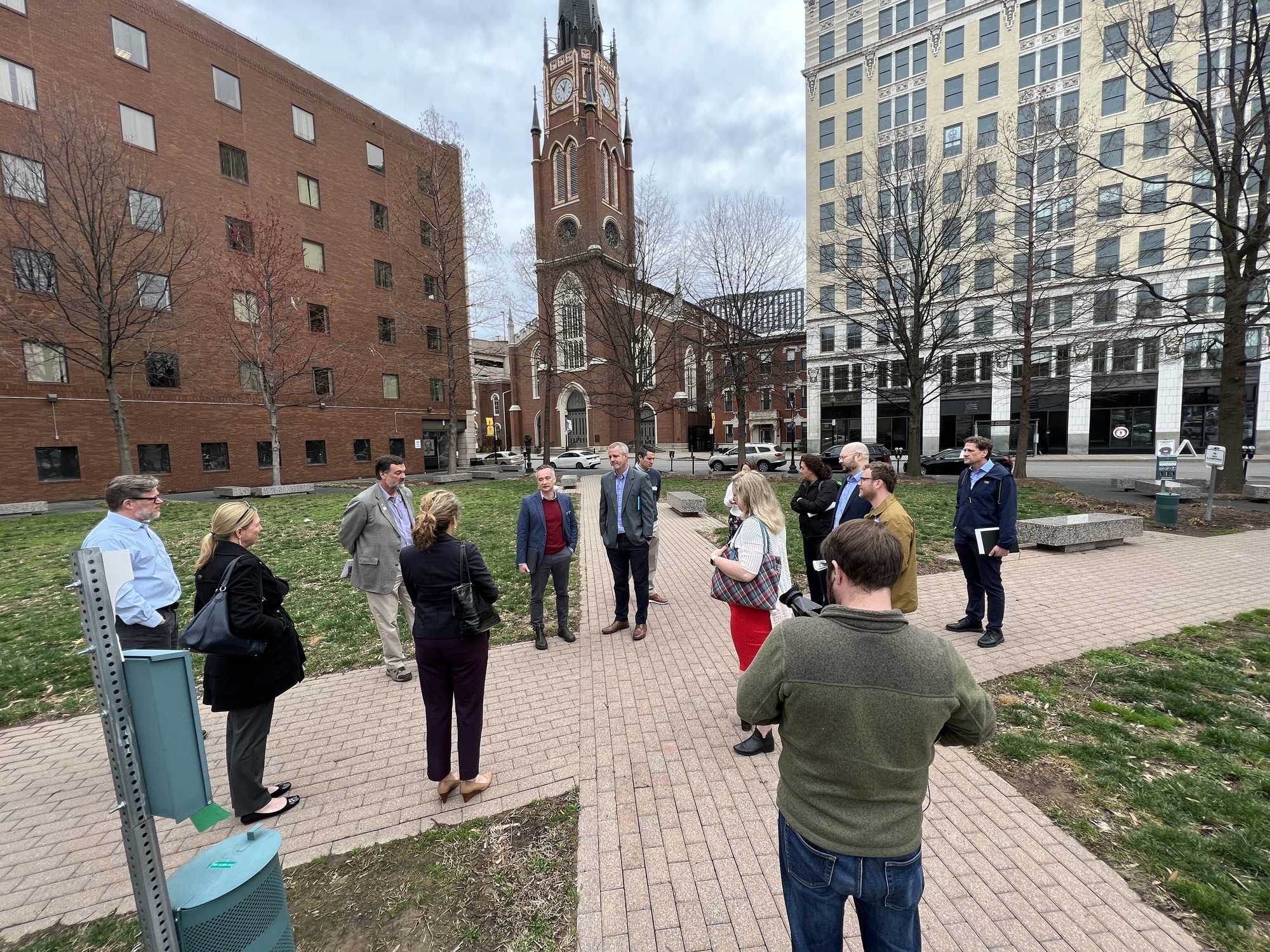
Workshops were conducted to align diverse stakeholders’ perspectives, centering the design around a shared vision that is welcoming and immersive and promotes health, comfort and connectivity to nature. The result is a thoughtfully planned space that balances natural beauty with urban functionality. As the MicroForest matures, it will not only serve as a green retreat amidst urban commotion but also engage inhabitants through research on health and environmental impacts of the fastest growing heat-island in the region.
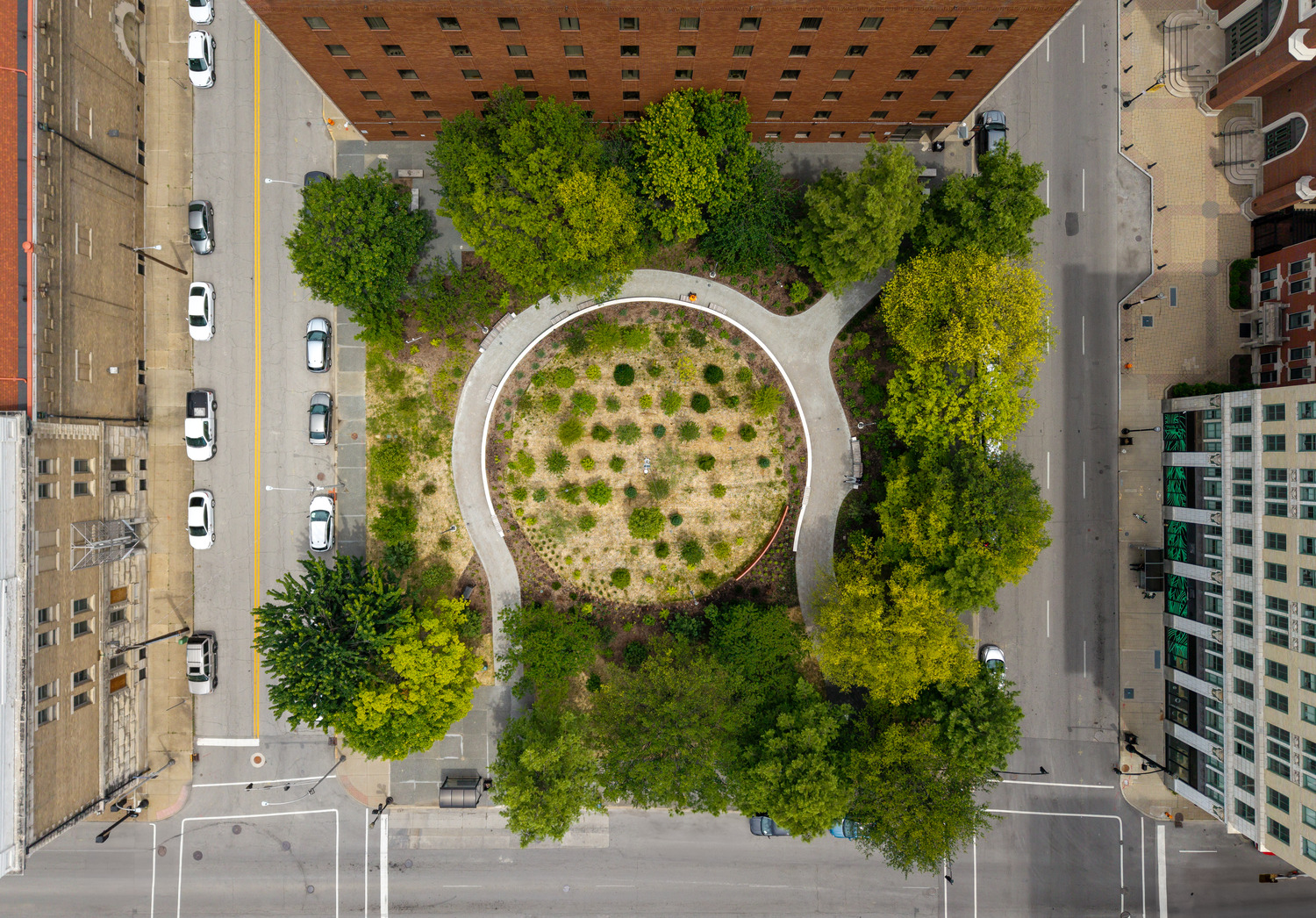
The Envirome Institute will use this space as an outdoor public laboratory. Researchers will test the physiological effects of dense planting on human health and to what extent the forest affects temperature and humidity in the area. Prior to planting and construction, the researchers collected baseline data on how spending time in the space affects stress levels and physiological responses compared with spending time in nearby downtown areas that lack greening. Additionally, the researchers are monitoring air and surface temperatures, air quality and other measures to assess the impact of densely planted trees on the environment in and around the park.
